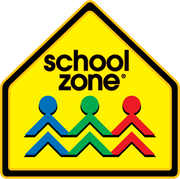In recent months, headlines about ChatGPT, a chatbot driven by artificial intelligence (AI), along with tools similar to it, are everywhere. But reports on what AI means for the littlest learners are just emerging.
What it is
A blog post by Nikolas McGehee for Michigan Virtual, titled "AI in Education: What You Need to Know about This Game-Changing Technology," says, "Artificial intelligence (AI) refers to the ability of a machine or computer system to perform tasks that would typically require human intelligence, such as learning, problem-solving, and decision-making."
Loosely, the concept as a "what if" idea is literally ancient. However, it gained momentum in the '50s and the next few decades as computers evolved. A 2017 Harvard article by Rockwell Anyoha, "The History of Artificial Intelligence," notes that prior to 1949, "computers could be told what to do but couldn't remember what they did," and computing was also extremely expensive.
Fast forward to the development and evolution of "machine learning." As Brad Bartlett, writing for Kidslox, a company providing online security tools, noted in his article "Understanding the Impact of AI on Kids and the Future," "Artificial Intelligence, at its base, is a form of computer programming that enables machines to learn from data and make decisions without human input." In turn, he adds that "Machine learning is a subset of AI technology that enables computers to learn from data without being explicitly programmed."
Even more succinctly, Inspirit Scholars in "What Is AI for Kids? An Introduction to Artificial Intelligence for Kids," defines AI as "the ability for a computer to think and learn."
Reaching into every level of education
What does that mean in today's classroom? ChatGPT has performed well on a number of sophisticated college-level exams, leading to both dire predictions about rampant cheating and loss of skills along with rosier forecasts about improving access, learning efficiency, and job preparedness.
All of it comes into play in early childhood ed (ECE) too. On the positive side, Brightwheel, producers of "childcare management software and app," in a post to their My Brightwheel blog titled "How AI Is Impacting Early Childhood Education," says that "Artificial intelligence is increasingly used in early childhood education settings to enhance learning opportunities for our youngest children." It goes on to say that because children grasp new concepts at different speeds and different ways, "Meeting each child where they are can be challenging, but AI helps to close the gap."

One way that's made possible is that AI gathers and stores data. In the Kidslox article, Bartlett describes a specific example: "generative AI can create real-time chatbots that can offer personalized advice to students as they work on their assignments." He adds that "AI can also be used to measure a student's progress and offer recommendations or interventions so that students receive the support they need to reach their learning goals."
Basically, parents and teachers can take the data gathered from an activity and use it to determine what needs to happen next, including whether a child is ready to move on or needs to do more work.
Creating smart AI users and consumers

Many jobs in the future will require understanding and working with AI, and this knowledge will start in the early years. The Childcare Education Institute has noted that "Introducing children to AI at a young age boosts their readiness for STEM, which in turn cultivates their overall academic growth." But AI also poses dependency, privacy, and security risks and concerns. In March, a post by Sophie Kinderlin to CNBC's Make It blog titled, "Worried about Your Kids and AI? Experts Share Advice and Risks to Look Out for," credits Aimee Roundtree, "a professor at Texas State University who worked on the World Economic Forum's 'AI for Children Toolkit,'" as suggesting that "When trying to teach kids about AI, starting small is a good idea."
She said, "Start with teaching the basics of how artificial intelligence works," urging that parents and educators "Teach children about artificial intelligence in plain language and at their level of understanding."
Along those lines, last year, Integrate.ai, in a "3 min read" titled, "Explain AI to Me Like a Five-Year-Old…or a CEO," by Roshanak Houmanfar, provided this: "AI is when you make a computer like a little brain. You help it to learn by giving it a lot of words and pictures and numbers." It continued, "If the computer hears you answer a lot of questions, later on it can quickly answer your questions. But it only knows what you show it and tell it, so it's not as smart as you are." (The company also welcomed readers to submit responses from actual five-year-olds, "ideally in audio or video.")

These days our now-familiar friends Siri and Alexa are guided by AI, and those can be good starting points for talking about AI with kids.
However, Kindlin's article summarizes multiple experts who suggest that learning how to engage with AI is just as important as knowing what it is. She writes, "That includes fostering skills like critical thinking and creativity that could complement AI, as well as addressing risks such as being overly reliant on AI for decision-making."
So talk about Siri and Alexa and how they got so "smart." But also emphasize that AI can be wrong and how important it is for us to think and learn—and write and do math problems—on our own.












